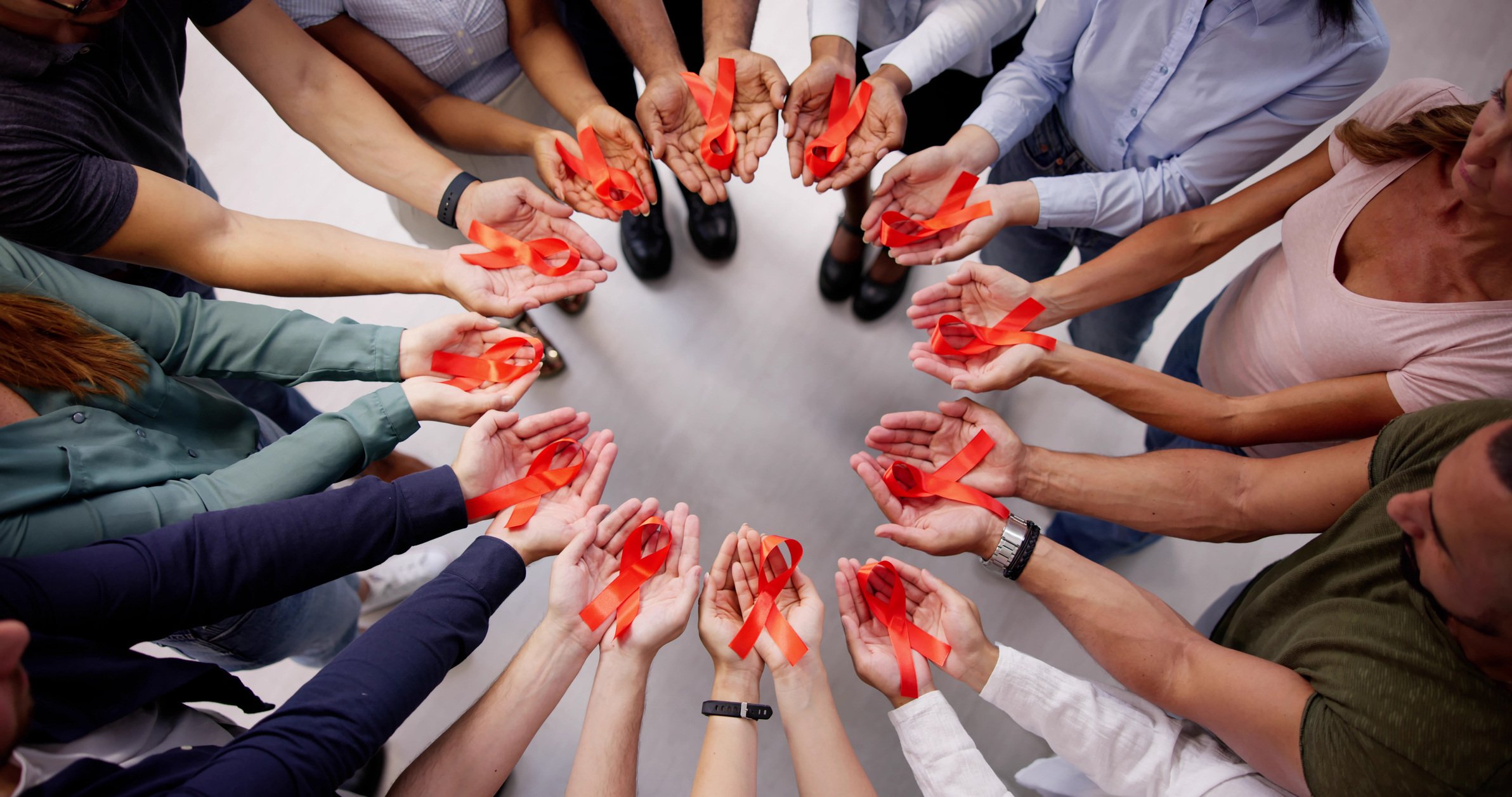Understanding HIV and AIDS
World AIDS Day, observed every December 1, aims to raise awareness about human immunodeficiency virus (HIV) and acquired immunodeficiency syndrome (AIDS). It’s also an opportunity to support individuals living with the condition and remember those who died from AIDS-related illnesses. While research and attitudes about AIDS have come a long way in the past few decades, some misconceptions and stigma persist. Let’s unpack the reality of HIV and AIDS.
Though HIV and AIDS are often mentioned in tandem, they’re two distinct conditions. According to the National Institutes of Health (NIH), HIV, which stands for human immunodeficiency virus, is a virus that attacks the infection-fighting cells of the immune system.
HIV is a precursor to AIDS, or acquired immunodeficiency syndrome, which can develop after HIV destroys the immune system. However, with treatment, such as antiretroviral therapy (ART), HIV can be prevented from progressing to AIDS.
You can learn more about HIV and AIDS by watching this Mass General Brigham video curated by Eric Rosenberg, MD, an infectious disease physician and clinical microbiologist at Massachusetts General Hospital:
What are the symptoms of HIV and AIDS?
When it comes to HIV, symptoms typically start showing up about 2-4 weeks after infection and can last anywhere from a few days to several weeks. Associated symptoms overlap with those of many other conditions but may include:
- Fever or chills
- Rash
- Night sweats
- Muscle aches
- Sore throat
- Fatigue
- Swollen lymph nodes
- Mouth ulcers
According to the NIH, one of the biggest symptoms of AIDS is the presence of certain opportunistic infections or “infections and infection-related cancers that occur more frequently or are more severe in people with weakened immune systems.”
In addition to symptoms like weakness, fatigue, and weight loss, AIDS can be diagnosed either through a drop in CD4 count to less than 200 cells/mm3 or the presence of opportunistic infections.
Transmission and risk reduction
HIV is only transmitted through shared bodily fluids, such as blood, seminal fluid, semen, vaginal fluids, rectal fluids, and breast milk. Transmission may occur through sex, sharing needles for drugs or tattooing, pregnancy, breastfeeding, or being stuck with a needle that has the blood of someone with HIV on it. It is not transmittable through water, air, or by touching objects handled by those with HIV.
For people without HIV, two ways to reduce the risk of acquiring it include:
- Using condoms during sex
- Getting on PrEP, or pre-exposure prophylaxis, a preventive medication for those at risk of becoming infected with HIV
For those already living with HIV, ART can eliminate the risk of transmission by reducing a person’s viral load to an undetectable level. This means that the level of HIV in the blood is too low to be detected by a viral load test. As a result, “people with HIV who maintain an undetectable viral load have no risk of transmitting HIV to their HIV-negative partner through sex,” reports the NIH.
Let this World AIDS Day remind us that people living with HIV or AIDS should never be defined by their illness and deserve the same dignity, respect, and compassionate care as anyone facing a health condition
Learn more about research happening across Mass General Brigham.

